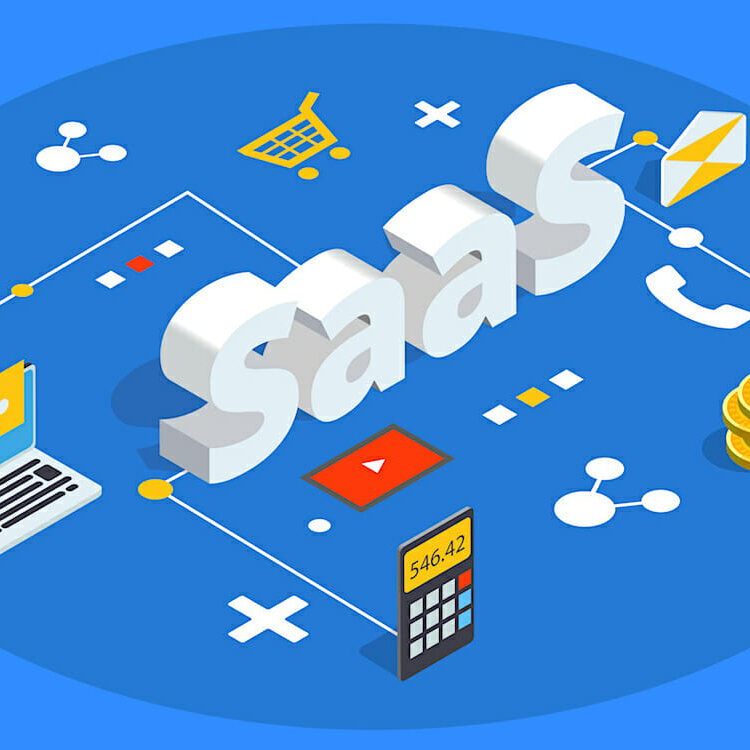Using AI to Supercharge Your Business Strategy In an era where disruption is the norm, businesses are seeking every advantage. Enter AI in business strategy, a transformative catalyst that can elevate decision-making from gut instincts to data-driven precision. Imagine harnessing predictive prescience to foresee market shifts, algorithmic acumen to optimize operations, and cognitive augmentation to spark innovation. This comprehensive guide explores how AI can propel your organization into uncharted realms of efficiency, agility, and growth.

1. The Strategic Imperative for AI
Traditional strategic frameworks—SWOT analyses, five-year plans, and balanced scorecards—are valuable but static. Markets evolve at breakneck speed. Consumer preferences pivot overnight. In such a volatile landscape, businesses need adaptive, real-time insights. That’s where AI in business strategy becomes indispensable. It infuses strategic planning with continuous learning, enabling rapid course corrections and proactive opportunity capture.
Short sentence. The result is not just surviving disruption but orchestrating it.
2. Unpacking AI Capabilities
AI encompasses a constellation of technologies:
- Machine Learning (ML): Systems that learn patterns from data and improve autonomously.
- Natural Language Processing (NLP): Algorithms that interpret and generate human language.
- Computer Vision: Tools that analyze and understand visual information.
- Robotic Process Automation (RPA): Bots that execute repetitive tasks with precision.
Each pillar offers distinct strategic leverage. Combined, they form a potent strategic arsenal, enabling businesses to detect subtle signals in noisy markets, automate bottlenecks, and unlock hidden revenue streams.
3. Data: The Lifeblood of AI
Data is to AI what fuel is to rockets. Without rich data, even the most sophisticated algorithms sputter. High-quality, diverse datasets empower models to discern nuanced trends—customer sentiment, supply chain vulnerabilities, or potential regulatory risks.
Data Fabrication and Integration
Construct a data fabric—an interconnected mesh of structured and unstructured sources. ERP systems, CRM platforms, social media feeds, and IoT sensors all feed into a unified repository. Advanced data engineering practices—ETL pipelines, data lakes, and semantic layers—ensure cleanliness, consistency, and accessibility.
Short sentence. Accuracy matters.
4. Market Intelligence and Competitive Foresight
Gone are the days of quarterly market reports. With AI in business strategy, continuous market intelligence is at your fingertips. Sentiment analysis on social chatter reveals early reactions to product launches. Price-optimization algorithms adjust pricing dynamically based on competitor movements. Predictive models forecast shifts in consumer demand before they materialize.
Anticipatory Analytics
Anticipatory analytics leverages time-series forecasting and reinforcement learning to project market trajectories. Retailers can preempt inventory shortages. Financial institutions can hedge against interest-rate moves. Manufacturers can schedule maintenance to avoid unplanned downtimes. The future becomes less a mystery and more a manageable variable.
5. Operational Efficiency and Cost Optimization
Operational bloat erodes profitability. AI-driven automation addresses this head-on. Robotic Process Automation (RPA) bots handle invoice processing, order management, and data reconciliation—freeing human talent for creative work. Smart workflows route exceptions to specialized teams, ensuring seamless throughput.
Prescriptive Maintenance
In industries reliant on machinery, downtime equals lost revenue. Predictive maintenance uses sensor data and anomaly detection to schedule upkeep before breakdowns. This transition from reactive repairs to prescriptive maintenance slashes costs, extends asset lifespans, and enhances safety.
6. Hyper-Personalized Customer Engagement
Customers no longer settle for one-size-fits-all experiences. They expect brands to anticipate their needs. AI-driven personalization engines analyze browsing history, purchase patterns, and demographic signals to serve bespoke recommendations—be it product suggestions, content, or promotional offers.
Short sentence. Engagement skyrockets.
Conversational AI and Virtual Assistants
Chatbots and voice assistants deliver 24/7 support, resolving routine inquiries swiftly and seamlessly escalating complex issues to human agents. Natural language processing ensures interactions feel intuitive and empathetic. The result? Enhanced customer satisfaction and reduced service costs.
7. Risk Management and Compliance
Regulatory landscapes are labyrinthine. Financial crimes, data breaches, and compliance violations can devastate reputations and balance sheets. AI in business strategy equips risk officers with real-time monitoring tools—transaction anomaly detectors, fraud-fighting neural nets, and regulatory-change trackers.
Adaptive Compliance
Dynamic compliance platforms leverage AI to map evolving regulations against internal policies. Automated auditing workflows flag discrepancies, recommend remedial actions, and generate evidence for regulators. This adaptive compliance paradigm keeps businesses ahead of enforcement actions and penalties.
8. Innovation and New Business Models
AI is not just about optimizing existing processes; it unlocks entirely new value propositions. Consider:
- AI-as-a-Service (AIaaS): Offering pre-trained models via subscription APIs.
- Data Monetization: Packaging aggregated insights for third-party consumption.
- Platform Ecosystems: Creating marketplaces where AI-driven applications interoperate.
These models redefine competitive moats and revenue streams.
Generative AI for Product Design
Generative design algorithms explore thousands of design permutations, proposing lightweight, high-strength components for aerospace or automotive applications. The result is accelerated R&D cycles and revolutionary product architectures.
9. Crafting an AI Implementation Roadmap
A scattershot approach courts failure. Successful enterprises follow a structured roadmap:
- Vision Alignment: Define strategic objectives—revenue growth, cost reduction, customer retention.
- Capability Assessment: Audit existing data assets, talent pools, and technology stacks.
- Use-Case Prioritization: Score potential AI applications by business impact and feasibility.
- Pilot Deployment: Launch minimum viable proofs of concept (POCs). Measure performance against KPIs.
- Scaling and Integration: Transition successful pilots into production, embedding them into core workflows.
- Continuous Improvement: Implement feedback loops and model retraining schedules to maintain accuracy.
Short sentence. Discipline ensures success.
10. Cultivating an AI-First Culture
Technology alone isn’t enough. Organizations must nurture an AI-first culture:
- Leadership Sponsorship: C-suite champions allocate resources and champion transformation.
- Cross-Functional Teams: Data scientists, domain experts, and software engineers collaborate in agile pods.
- Upskilling and Reskilling: Offer training in data literacy, ML fundamentals, and ethical AI practices.
- Fail-Fast Mindset: Encourage experimentation and accept that some POCs will not mature into full solutions.
An empowered workforce bridges the gap between AI potential and business reality.
11. Ethical and Governance Considerations
AI’s power demands robust governance. Key pillars include:
- Transparency: Document model decision pathways and data provenance.
- Fairness: Test for bias in training data and outcomes; ensure equitable treatment across demographics.
- Privacy: Adopt privacy-preserving techniques—differential privacy, federated learning—to safeguard personal data.
- Accountability: Establish clear ownership for AI systems, from development through post-deployment monitoring.
Ethical AI fosters trust among customers, regulators, and employees alike.
12. Navigating Common Pitfalls
Even the best-intentioned AI initiatives can falter. Avoid these missteps:
- Data Silos: Fragmented data hinders comprehensive insights. Break down organizational barriers.
- Overpromising: Underestimate complexity at your peril. Set realistic milestones and temper expectations.
- Ignoring Change Management: Employees need support to adopt new tools. Neglect this, and adoption stalls.
- Vendor Lock-In: Relying solely on one AI provider can stifle flexibility. Favor interoperable, open-architecture solutions.
Short sentence. Vigilance is essential.
13. Case Studies: AI-Powered Success Stories
13.1 Retail Reinvention
A global fashion retailer implemented demand-forecasting models that reduced stockouts by 30% and markdown costs by 20%. AI-driven visual merchandising recommendations boosted online conversion rates by 15%.
13.2 Manufacturing Marvel
An automotive parts supplier deployed predictive maintenance across its stamping presses. Unplanned downtime dropped by 40%, while maintenance costs fell by 25%, translating into millions in annual savings.
13.3 Financial Services Transformation
A leading bank integrated AI-driven credit scoring, slashing default rates by 10% and accelerating loan approvals from days to minutes. Customer satisfaction surged as friction vanished.
Each case underscores how AI in business strategy catalyzes tangible, bottom-line outcomes.
14. Measuring ROI and Business Impact
To justify AI investments, quantify business impact:
- Revenue Uplift: Incremental sales from personalized recommendations or optimized pricing.
- Cost Savings: Labor reduction via automation and efficiency gains.
- Risk Reduction: Loss avoidance through fraud detection and predictive maintenance.
- Time to Market: Accelerated product development cycles enabled by generative AI.
Develop a balanced scorecard that links AI KPIs to strategic objectives. This ensures continued executive support and resource allocation.
15. The Road Ahead: AI’s Next Frontier
AI continues its relentless advance. Look for these emerging trends:
- Explainable AI: Models that articulate their reasoning in human-friendly terms.
- TinyML: Embedded AI on edge devices, enabling real-time insights without cloud latency.
- Cognitive Automation: Combining RPA with AI-driven decision engines for end-to-end workflow orchestration.
- Quantum Machine Learning: Early research hints at exponential speedups for certain optimization and pattern-recognition tasks.
Staying ahead requires vigilance, curiosity, and a willingness to pilot nascent technologies.
Conclusion
Embracing AI in business strategy is no longer optional—it’s a prerequisite for competitive survival. By integrating AI-driven market intelligence, automating operations, and personalizing customer engagement, organizations can unlock unprecedented growth and resilience. The journey demands clarity of vision, data-centric rigor, and a culture attuned to continuous learning. But the destination—a future where decisions are informed by predictive prescience and augmented by algorithmic insight—is well worth the voyage. Chart your course today, and let AI propel your strategic ascent.






